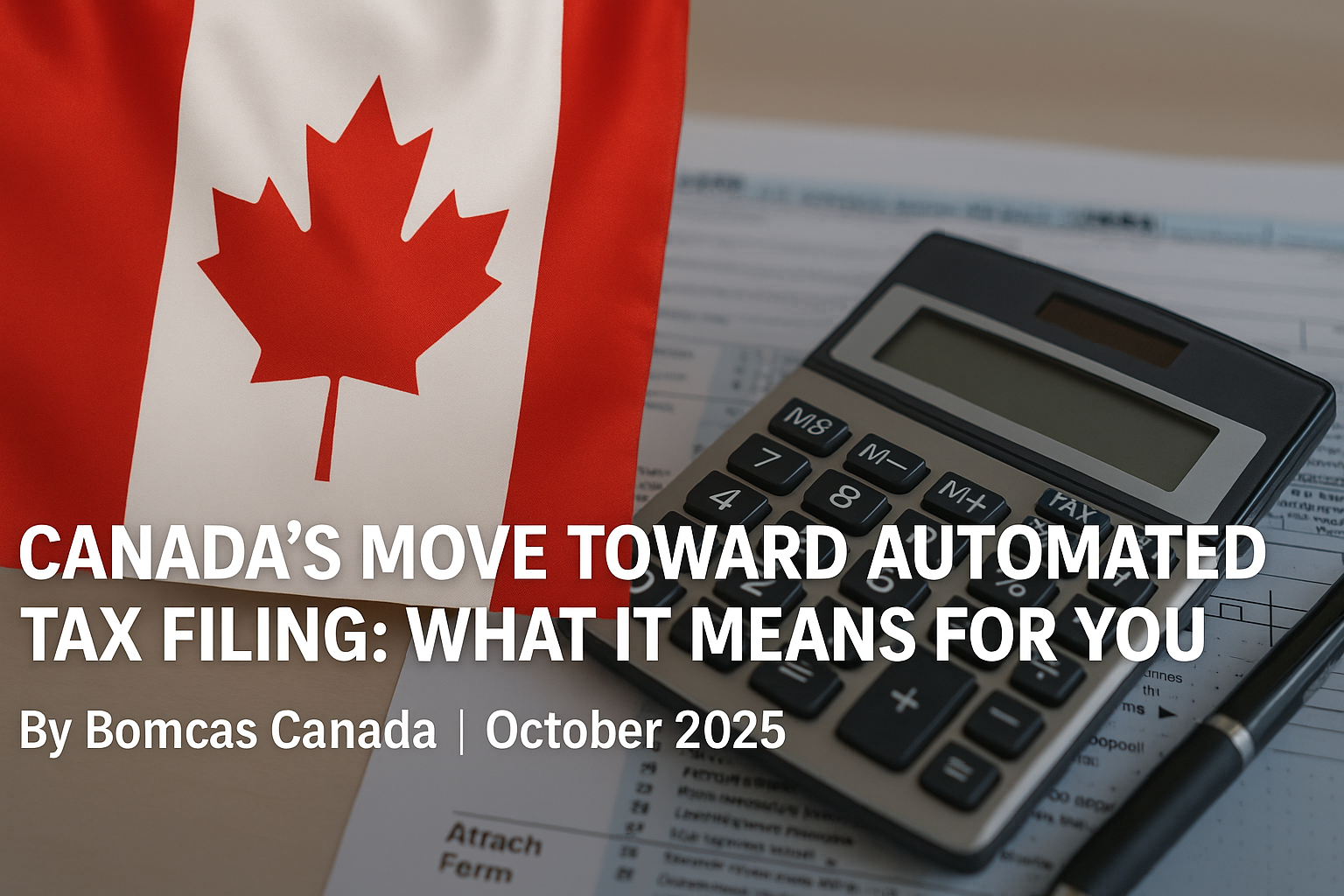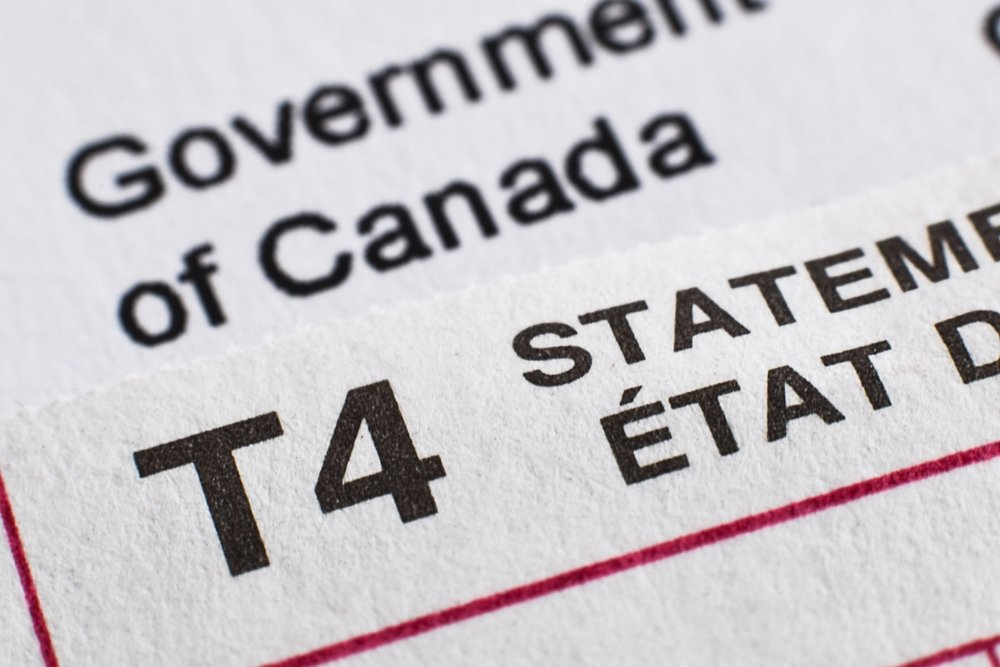Navigating the complexities of British Columbia corporate income tax can be a daunting task for businesses operating in the province. Understanding the intricacies of tax rates, calculations, and compliance requirements is crucial for companies to manage their financial obligations effectively. This comprehensive guide aims to shed light on the key aspects of corporate income tax in British Columbia, providing valuable insights for business owners, accountants, and financial professionals.
From exploring the current tax rates to delving into the nuances of calculating taxable income, this guide covers essential topics that impact corporate tax obligations in British Columbia. Readers will gain knowledge about filing requirements, deadlines, available tax credits, and incentives offered by the provincial government. Additionally, the guide examines compliance procedures, audit processes, and strategies to optimize tax planning, equipping businesses with the tools they need to navigate the British Columbia corporate tax landscape confidently.

Overview of Corporate Income Tax in British Columbia
British Columbia’s corporate income tax system plays a crucial role in the province’s economic landscape. It serves as a means to generate revenue for the government while also providing incentives for businesses to operate and grow within the region. The system is designed to be fair, transparent, and consistently applied, ensuring that companies contribute their share to the province’s fiscal health.
Definition and Purpose
Corporate income tax in British Columbia refers to the tax levied on the taxable income of corporations operating within the province. Its primary purpose is to collect revenue from businesses profiting from the province’s resources and infrastructure. However, it also serves as a tool to encourage economic growth and investment through various tax credits and incentives.
The tax system in B.C. is structured to promote business development and innovation. It offers competitive rates that allow companies to retain more of their earnings for reinvestment and expansion. This approach aligns with the province’s focus on creating a business-friendly environment that fosters growth and attracts new enterprises.
Governing Bodies and Regulations
The administration of corporate income tax in British Columbia involves both federal and provincial authorities. At the federal level, the Canada Revenue Agency (CRA) oversees the collection of corporate taxes for most provinces, including British Columbia. The provincial government, through the B.C. Ministry of Finance, sets specific rates and regulations that apply to businesses operating within its jurisdiction.
Key regulations governing corporate income tax in B.C. include:
- The British Columbia Income Tax Act
- The federal Income Tax Act
- Various tax credit programs and incentives
The provincial government publishes an annual report titled “Better Regulations for British Columbians,” which outlines regulatory and service improvements made across government sectors. This report reflects B.C.’s commitment to streamlining regulations and creating an agile business environment.
Types of Corporations Affected
Corporate income tax in British Columbia applies to various types of corporations, each with its own tax implications:
- Canadian-controlled private corporations (CCPCs)
- Other private corporations
- Public corporations
- Corporations controlled by public corporations
- Other corporations (e.g., general insurers and Crown corporations)
The classification of a corporation has significant tax consequences, as it determines eligibility for certain rates and deductions. For instance, CCPCs may qualify for the lower small business tax rate on a portion of their income, while public corporations are subject to different rules.
It’s important to note that changes in corporation type can result in substantial tax implications. Corporations must accurately identify their type at the end of each tax year to ensure proper tax treatment.
In British Columbia, the corporate tax structure includes two main rates:
- The general rate (12%)
- The lower small business rate (2%)
The lower rate applies to CCPCs on their active business income up to the B.C. business limit of CAD 694,000.08. Income exceeding this limit or not eligible for the small business rate is taxed at the general rate.
BOMCAS Canada, a British Columbia corporate income tax accountant, offers expert guidance on navigating these complex tax regulations. Their services are invaluable for businesses seeking to optimize their tax strategies and ensure compliance with provincial and federal requirements.
Corporate Income Tax Rates in BC
British Columbia’s corporate income tax system features two distinct rates: the general rate and the lower small business rate. These rates are expressed as a percentage of taxable income earned within the province. The structure aims to create a balanced approach, supporting small businesses while ensuring larger corporations contribute their fair share to the provincial economy.
General Corporate Tax Rate
The general corporate income tax rate in British Columbia currently stands at 12%. This rate applies to income exceeding CAD 694,000.08 and any income that doesn’t qualify for the lower small business rate, such as investment income. When combined with the federal corporate tax rate of 15%, the total tax burden for corporations in B.C. reaches 27%. This combined rate positions British Columbia competitively, falling below the average tax rate across all U.S. states and Canadian provinces.
The general rate has undergone several changes over the years:
| Effective Date | General Rate |
|---|---|
| January 1, 2018 – Present | 12.0% |
| April 1, 2013 – December 31, 2017 | 11.0% |
| January 1, 2011 – March 31, 2013 | 10.0% |
| January 1, 2010 – December 31, 2010 | 10.5% |
| July 1, 2008 – December 31, 2009 | 11.0% |
| July 1, 2005 – June 30, 2008 | 12.0% |
| January 1, 2002 – June 30, 2005 | 13.5% |
| July 1, 1993 – December 31, 2001 | 16.5% |
Small Business Tax Rate
To foster growth and support smaller enterprises, British Columbia offers a significantly lower tax rate for eligible small businesses. The current small business corporate income tax rate is set at 2%, a substantial reduction from the general rate. This lower rate applies to Canadian-controlled private corporations (CCPCs) on their active business income up to the B.C. business limit of CAD 694,000.08.
The small business rate has also seen changes over time:
| Effective Date | Small Business Rate |
|---|---|
| April 1, 2017 – Present | 2.0% |
| December 1, 2008 – March 31, 2017 | 2.5% |
| July 1, 2008 – November 30, 2008 | 3.5% |
| January 1, 2001 – June 30, 2008 | 4.5% |
| July 1, 2000 – December 31, 2000 | 4.75% |
| July 1, 1999 – June 30, 2000 | 5.5% |
| January 1, 1999 – June 30, 1999 | 8.5% |
Historical Rate Changes
The evolution of corporate tax rates in British Columbia reflects the province’s ongoing efforts to balance revenue generation with creating an attractive business environment. Since the early 1990s, there has been a general trend towards lower tax rates for both large corporations and small businesses.
For the general corporate tax rate, there has been a significant reduction from 16.5% in the 1990s to the current 12%. This decrease has helped to enhance B.C.’s competitiveness in attracting and retaining businesses.
The small business tax rate has seen even more dramatic reductions, dropping from 8.5% in early 1999 to the current 2%. This substantial decrease underscores the province’s commitment to supporting small businesses and encouraging entrepreneurship.
These rate changes have played a crucial role in shaping British Columbia’s economic landscape, influencing business decisions and contributing to the province’s overall economic strategy.
For businesses navigating the complexities of British Columbia’s corporate income tax system, expert guidance can be invaluable. BOMCAS Canada, a specialized British Columbia corporate income tax accountant, offers comprehensive services to help businesses optimize their tax strategies and ensure compliance with provincial and federal requirements. Their expertise can be particularly beneficial in understanding how these tax rates apply to specific business situations and in identifying potential tax-saving opportunities.
Calculating Taxable Income
Calculating taxable income is a crucial step for corporations operating in British Columbia. This process involves determining business income, identifying allowable deductions, and accounting for capital gains and losses. Understanding these components is essential for accurate tax reporting and compliance with provincial and federal regulations.
Determining Business Income
Business income forms the foundation of a corporation’s taxable income. It includes revenue generated from active business operations, excluding income from specified investment businesses or personal service businesses. For Canadian-controlled private corporations (CCPCs), active business income up to the B.C. business limit of CAD 694,000.08 is eligible for the lower small business tax rate.
Income calculation takes into account various sources, including:
- Sales revenue
- Interest income
- Rental income
- Royalties
- Partnership income
It’s important to note that for partnerships, income is determined at the partnership level and then allocated among partners according to the terms of the partnership agreement.
Allowable Deductions
To arrive at taxable income, corporations can claim various deductions against their business income. These deductions must be reasonable and directly related to earning income. Some key allowable deductions include:
- Business expenses (e.g., advertising, rent, utilities)
- Capital Cost Allowance (CCA) for depreciable property
- Salaries, wages, and benefits
- Interest on business-related loans
- Business-use-of-home expenses
Corporations should be aware of specific limitations on certain deductions:
- Meals and entertainment expenses are generally limited to 50% of the cost.
- Charitable donations are deductible up to 75% of net income, with a five-year carryforward provision.
- Capital expenditures are not immediately deductible but may be subject to depreciation or amortization.
It’s crucial to maintain proper documentation for all claimed expenses, as the Canada Revenue Agency (CRA) may request supporting evidence during audits.
Capital Gains and Losses
Capital gains and losses play a significant role in determining a corporation’s taxable income. When a corporation sells a capital asset, such as real property, shares, or bonds, it may realize a capital gain or loss. The tax treatment of these transactions is as follows:
- Capital Gains: Half of the capital gain is included in taxable income and taxed at ordinary rates. This is known as the capital gains inclusion rate.
- Capital Losses: These are deductible, but generally only against capital gains. Excess allowable capital losses can be carried back three years or carried forward indefinitely to offset future capital gains.
- Non-Resident Corporations: They are subject to tax on taxable capital gains arising from the disposition of taxable Canadian property.
It’s important to note that the 2024 federal budget proposes to increase the taxable portion of capital gains to two-thirds for dispositions after June 24, 2024. This change, if implemented, will have a significant impact on the tax liability of corporations realizing capital gains.
For corporations navigating the complexities of calculating taxable income in British Columbia, seeking professional assistance can be invaluable. BOMCAS Canada, a specialized British Columbia corporate income tax accountant, offers expert guidance in optimizing tax strategies and ensuring compliance with provincial and federal requirements. Their services can help businesses accurately determine their taxable income while maximizing allowable deductions and managing capital gains and losses effectively.
Filing Requirements and Deadlines
Annual Filing Obligations
Corporations operating in British Columbia have specific filing requirements for their income tax returns. All resident corporations, including non-profit organizations, tax-exempt corporations, and inactive corporations, must file a corporation income tax (T2) return every tax year, even if there is no tax payable. This obligation extends to corporations that maintain a permanent establishment in B.C. at any time during the tax year.
The corporate income tax system in British Columbia is administered in partnership with the Canada Revenue Agency (CRA). Corporations file their provincial corporate income taxes along with their federal income tax return using their business number. This integrated approach streamlines the filing process for businesses operating in the province.
Required Forms and Documentation
To fulfill their tax obligations, corporations must complete and submit the following forms:
- T2 Corporation Income Tax Return: This is a nine-page return that any corporation can use. It serves as the primary form for reporting corporate income tax.
- T2 Short Return: A two-page return plus one schedule, available for eligible corporations. Businesses should consult Guide T4012, T2 Corporation Income Tax Guide, to determine if they qualify to use this simplified form.
- Schedule 427 British Columbia Corporation Tax Calculation or Schedule 5 Tax Calculation Supplementary – Corporations: These schedules are specific to British Columbia and must be completed along with the T2 return.
Corporations are advised to use the Corporation Income Tax Guide (T4012) while filling out their corporate income tax return to ensure accuracy and compliance with current regulations.
For corporations with annual gross revenues exceeding CAD 1.39 million, electronic filing through the Internet is mandatory. This requirement helps streamline the filing process and improves efficiency for both businesses and tax authorities.
Payment Due Dates
Understanding the payment deadlines is crucial for corporations to avoid penalties and interest charges. The key dates for corporate tax payments are as follows:
- Filing Deadline: Corporations must file their T2 corporate income tax return within six months of their tax year ending. For example:
- If the tax year ends on March 31st, the filing due date is September 30th.
- For a tax year ending on August 31st, the filing deadline is February 28th.
- When the tax year ends on a specific date (e.g., September 23rd), the filing due date is six months later (March 23rd).
- Payment Deadline: The tax amount a corporation owes for a tax year is generally due within two months after the end of the tax year. However, for Canadian Controlled Private Corporations (CCPCs), the payment deadline is extended to three months, provided certain conditions are met.
- Installment Payments: Tax installment payments are typically due on the last day of every month or quarter of a corporation’s tax year. For instance, if a corporation’s tax year begins on October 10, 2024, the first installment payment would be due by January 9, 2025.
It’s important to note that when a due date falls on a Saturday, Sunday, or public holiday recognized by the CRA, the return or payment is considered on time if received by the CRA on or before the next business day.
For businesses navigating the complexities of British Columbia’s corporate income tax system, expert guidance can be invaluable. BOMCAS Canada, a specialized British Columbia corporate income tax accountant, offers comprehensive services to help businesses meet their filing requirements and payment deadlines. Their expertise can ensure timely and accurate submissions, minimizing the risk of penalties and optimizing tax strategies for corporations operating in the province.
Tax Credits and Incentives
British Columbia offers a range of tax credits and incentives to support businesses operating in the province. These programs aim to encourage investment, innovation, and growth across various sectors of the economy.
Small Business Venture Capital Tax Credit
The Small Business Venture Capital Tax Credit is designed to promote equity capital investments in B.C. small businesses. This program helps small businesses access early-stage venture capital, which is crucial for their development and growth. Corporations investing in shares of a registered venture capital corporation or eligible business corporation can claim this tax credit.
Key features of the program include:
- A tax credit equal to the lesser of the amount on the tax credit certificate or the provincial income tax otherwise payable.
- The ability to carry forward unused credits for up to four years.
- An increase in the annual maximum venture capital tax credit from CAD 53.44 million to CAD 56.91 million for the 2022 to 2024 calendar years.
- An additional allocation of CAD 3.47 million for investments in clean technology businesses.
To claim the credit, corporations must file their T2 Corporation Income Tax Return and enter the credit amount on line 656 of Schedule 5, Tax Calculation Supplementary – Corporations.
Research and Development Tax Credits
British Columbia offers the Scientific Research and Experimental Development (SR&ED) Tax Credit to encourage innovation and technological advancement. This credit is available to qualifying corporations with a permanent establishment in the province for expenditures incurred before September 1, 2027.
The SR&ED Tax Credit has the following characteristics:
- A 10% credit rate on qualified expenditures.
- Refundable credits for Canadian-controlled private corporations (CCPCs) within their expenditure limit.
- Non-refundable credits for non-CCPCs and CCPCs exceeding their expenditure limit.
- The ability to carry back unused credits for three years or forward for ten years.
To claim this credit, corporations must file Form T666, British Columbia (BC) Scientific Research and Experimental Development Tax Credit, within 18 months of the tax year end in which the qualified expenditures were incurred.
Industry-Specific Credits
British Columbia provides targeted tax credits and incentives for businesses in specific industries:
- Book Publishing Tax Credit: A refundable tax credit for businesses primarily operating in B.C. that publish books.
- Interactive Digital Media Tax Credit: Reduces salary and wage costs for companies developing interactive digital media products in B.C.
- Film and Television Tax Credits: Special credits for film or video productions with Canadian content.
- Production Services Tax Credits: Available for accredited film and video production corporations working in B.C.
- Mining Exploration Tax Credit: Reduces the cost of mineral exploration in B.C., with an enhanced rate for areas affected by the mountain pine beetle.
- Oil and Gas Allowances, Credits, and Exemptions: Various programs supporting oil and gas production in B.C.
- Shipbuilding and Ship Repair Industry Tax Credit: A special tax credit for hiring apprentices in the B.C. shipbuilding and ship repair industry.
- Farmers’ Food Donation Tax Credit: A non-refundable tax credit for donating agricultural products to registered charities.
These industry-specific credits are designed to support and stimulate growth in key sectors of the British Columbia economy.
For businesses navigating the complexities of these tax credits and incentives, BOMCAS Canada, a British Columbia corporate income tax accountant, offers expert guidance. Their services can help companies identify eligible credits, ensure compliance with program requirements, and maximize the benefits of these incentives.
Compliance and Audits
Record Keeping Requirements
Corporations operating in British Columbia must maintain accurate and complete records to fulfill their tax obligations. The Canada Revenue Agency (CRA) requires businesses to keep all records and supporting documents for a minimum of six years from the end of the last tax year they relate to. These records should be reliable, complete, and supported by source documents to verify the information contained within them.
For electronic records, businesses must keep them in an electronically readable format, even if paper copies are also maintained. It’s crucial to note that using the services of a tax professional does not relieve businesses of their record-keeping responsibilities.
Corporations must keep their records at their place of business or residence in Canada unless they receive written permission from the CRA to store them elsewhere. In cases where permission is granted to keep records outside of Canada, businesses must make them available upon request for review by the CRA in Canada.
CRA Audit Process
The CRA conducts audits to ensure taxpayers are fulfilling their tax obligations and following tax laws correctly. The audit process typically begins with the CRA contacting the taxpayer by mail or phone to inform them of the audit and provide details about the time period being audited.
During an audit, a CRA auditor examines various records, including:
- Business records (ledgers, invoices, receipts, contracts, bank statements)
- Personal records of business owners (bank statements, mortgage documents)
- Records of related individuals or entities
Audits may be conducted virtually, with taxpayers required to send documents electronically using the CRA’s secure services. The auditor reviews the submitted documentation and determines whether adjustments are necessary.
If adjustments are required, the auditor issues a proposal letter, giving the taxpayer 30 days to review and provide representations before the audit is finalized. After the audit, a final letter is sent to notify the taxpayer of the outcome, which may result in no changes, additional tax owing, or a potential refund.
Penalties for Non-Compliance
The CRA imposes various penalties for non-compliance with tax laws and regulations. Some common penalties include:
- Failure to file penalties: 5% of unpaid tax due on the filing deadline, plus 1% for each complete month the return is late (up to 12 months).
- Installment penalty: Applies when installment interest exceeds CAD 1,388.00.
- Large corporation penalties: Additional penalties for large corporations failing to file required returns.
- Penalty for not reporting income: Applies to unreported amounts equal to or greater than CAD 694.00.
- False statements or omissions: The greater of CAD 138.80 or 50% of the understated tax.
- Non-resident corporation penalties: CAD 138.80 or CAD 34.70 for each complete day the return is late (up to 100 days).
- Non-compliance with mandatory electronic filing: Penalties for corporations with annual gross revenue exceeding CAD 1.39 million that fail to file electronically.
To avoid these penalties, businesses should ensure timely and accurate filing of tax returns, maintain proper records, and comply with all relevant tax laws and regulations.
For expert guidance on navigating British Columbia’s corporate income tax compliance and audit processes, BOMCAS Canada offers comprehensive services. As a specialized British Columbia corporate income tax accountant, BOMCAS Canada can assist businesses with their tax and accounting needs across British Columbia and Canada.
Strategies for Tax Planning
Effective tax planning is crucial for corporations operating in British Columbia to optimize their financial position and minimize tax liabilities. By implementing strategic approaches, businesses can leverage various opportunities within the tax system to their advantage.
Income Splitting
Income splitting is a powerful strategy that involves transferring income from high-income family members to lower-income family members, resulting in reduced overall tax for the family unit. This approach takes advantage of Canada’s graduated tax bracket system, where lower income is taxed at a lower rate.
One common method of income splitting is pension income sharing. Eligible individuals can split up to 50% of their qualifying pension income with a spouse or partner. This can lead to significant tax savings, potentially up to CAD 4,164.00 annually for every CAD 13,880.00 of pension income split, depending on the province and the tax rate difference between spouses.
Another effective tool is the spousal or partner Registered Retirement Savings Plan (RRSP). In this arrangement, one spouse contributes to an RRSP owned by the other spouse. When funds are withdrawn, they are taxed in the hands of the lower-income spouse, potentially resulting in permanent tax savings.
For business owners, hiring family members can be an excellent income splitting strategy. By paying reasonable salaries to spouses or children for work performed, income can be shifted to lower tax brackets. It’s crucial to ensure that the compensation is commensurate with the work done to avoid scrutiny from tax authorities.
Timing of Income and Expenses
Strategic timing of income recognition and expense claims can have a substantial impact on a corporation’s tax liability. By carefully managing when income is received and when expenses are incurred, businesses can optimize their tax position.
For instance, corporations may consider deferring income to a future tax year if they anticipate being in a lower tax bracket. Conversely, accelerating deductible expenses into the current year can reduce taxable income when tax rates are higher.
It’s important to note that the “attribution rules” in the Income Tax Act can complicate income splitting strategies. These rules generally attribute income earned on transferred or gifted money back to the original transferor. However, exceptions exist that allow for effective income splitting in various situations.
Utilizing Tax Credits Effectively
British Columbia offers a range of tax credits that corporations can leverage to reduce their tax burden. The Production Services Tax Credit program, for example, provides refundable corporate income tax credits for accredited production corporations in the film and video industry.
This program consists of four tax credits with varying rates:
- Production services tax credit (28%)
- Regional production services tax credit (6%)
- Distant location production services tax credit (6%)
- Digital animation, visual effects and post-production services tax credit (16%)
To claim these credits, corporations must complete the British Columbia Production Services Tax Credit (T1197) form, attach the accreditation certificate from Creative BC, and submit it with their T2 Corporation Income Tax Return.
It’s crucial for businesses to stay informed about changes to tax credit programs. For instance, Budget 2024 has excluded animated productions that start principal photography on or after June 1, 2024, from the regional tax credit and distant location tax credit.
By implementing these strategies and staying abreast of tax credit opportunities, corporations in British Columbia can significantly optimize their tax position. For expert guidance on navigating the complexities of corporate income tax planning, BOMCAS Canada offers comprehensive services as a specialized British Columbia corporate income tax accountant. Their expertise can help businesses maximize tax savings and ensure compliance with provincial and federal requirements.
Conclusion
Navigating the complexities of British Columbia’s corporate income tax system requires a comprehensive understanding of rates, calculations, and compliance requirements. This guide has shed light on key aspects, from tax rates and incentives to filing obligations and audit processes. By grasping these elements, businesses can better manage their tax responsibilities and leverage available opportunities to optimize their financial position.
For companies seeking to navigate this intricate landscape effectively, expert guidance can be invaluable. BOMCAS Canada, a British Columbia corporate income tax accountant, offers specialized services to help businesses with their tax and accounting needs across the province and Canada. To get professional assistance with your corporate tax matters in British Columbia, contact BOMCAS Canada today.










 View Our Location
View Our Location





 181 Meadowview Bay, Sherwood Park, AB T8H 1P7, Canada (Online Clients Only)
181 Meadowview Bay, Sherwood Park, AB T8H 1P7, Canada (Online Clients Only)